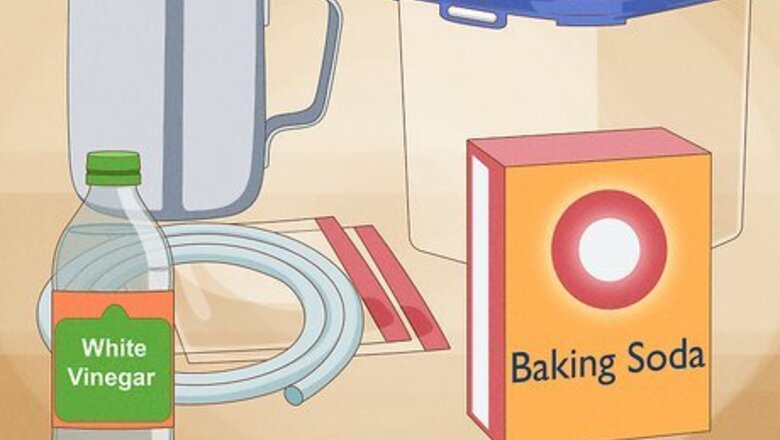
views
- Use CO2 to asphyxiate the rodent. Though this is the most humane option, it’s also best done by a veterinarian.
- Set up a traditional spring trap or use a small-caliber, low-power gun. Practice all firearm safety measures if you take that route.
- Kill the rodent with blunt force trauma if necessary. Consider your options carefully and avoid direct contact with the rodent to keep yourself safe.
Using Asphyxiation by CO2
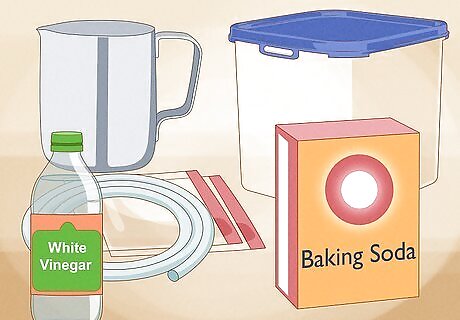
Before you start, prepare your materials. This method involves mixing baking soda with white vinegar to create the gas that will asphyxiate the rodent. As well as the vinegar and baking soda, you will need to prepare a sealable plastic container, a sealable plastic bag, a hose to connect the two, and a separate container to mix the vinegar and baking soda, such as a glass or jug. Asphyxiation by CO2 is the only method approved by the American Veterinary Medical Association which uses common household materials. These guidelines are meant for vets not ordinary people, so think about whether you are qualified to carry this out without causing undue pain and suffering for the rodent. Fasteners, ties and clothes will be needed to secure the different containers. The plastic container is the euthanasia chamber for the rodent The plastic bag is the CO2 chamber where the gas is produced.

Prepare the CO2 chamber. Put the baking soda into the bottom of the bag, and then place the separate container with the vinegar into the bag, without spilling it. When you combine the baking soda and vinegar later, the reaction produces the gas carbon dioxide (CO2), which the rodent can't breathe. The ratio of vinegar to baking soda will vary by the size of the container you are using. Getting the correct concentration of CO2 is key to its humaneness. You want to create a 30%-40% concentration of CO2 in the euthanasia container to cause the rodent to lose consciousness.
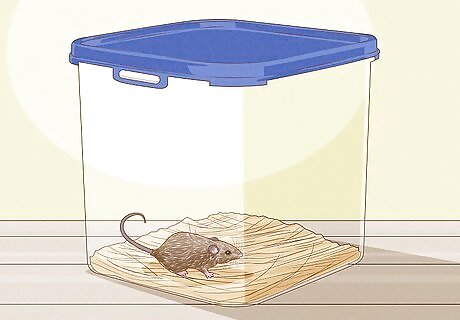
Prepare the euthanasia chamber. Taking care when you handle the rodent, place it into the airtight plastic container. Tupperware containers work well. Adding some nesting material can make it a little more comfortable and perhaps put the rodent somewhat more at ease.
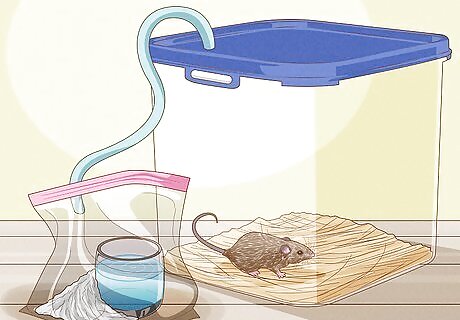
Connect the two with the hose. Affix the hose to the top of the bag, and secure it with a rubber band or tie and then put the other end in the plastic container with the rodent. Use a cloth or towel to block of the area around where the hose enters the container to make it airtight.

Slowly pour the vinegar over the baking soda. Once it is all secured you should begin carefully pouring the white vinegar over the baking soda, to create the CO2 which will then travel through the short hose to the plastic container. Pour around half of the vinegar, and then observe the rodent. The rodent should quickly pass out and die. Once it becomes unresponsive, pour the rest of vinegar over. Carbon dioxide exposure that uses a gradual fill method like this is less likely to cause pain.
Use Spring Traps

Get some sturdy and re-usable spring traps. When designed and set-up when these traps make a quick death more likely.
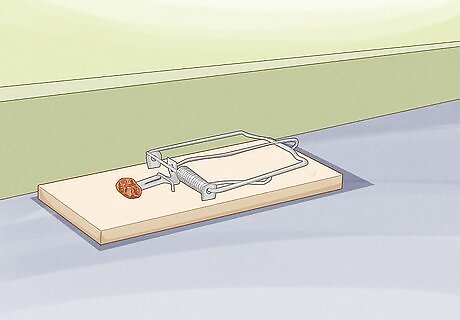
Set-up a traditional spring trap. To set-up a trap like this, place bait within the specified area, ensuring that the rest of the trap is clean. Doing this will make it more likely that, when tripped, the trap will close fully. Then, place the trap at right angles to a wall with the bait nearest the wall. The rodent should have a clear path to the trap. The bait should be changed regularly.

Check it regularly. You should check the traps every morning, and be prepared to dispose of any dead rodents straight-away. Carefully remove them from the trap, place in a plastic bag, and then place that bag in a second bag, and throw it away into a secured bin. Always use gloves when you are doing this, and you can use a household disinfectant to clean the trap.
Blunt Force Trauma to the Head

Know your goal. The aim of this method is to destroy the rodent's brain with one swift, powerful blow to the head from a hammer or other blunt striking object. This can be very daunting and/or emotionally taxing.
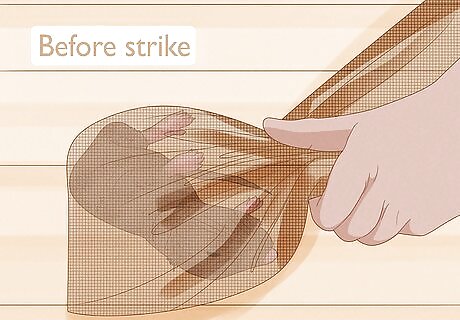
If you proceed, ensure that the rodent cannot move. You also want to be sure you have a clear shot when you strike. One useful method is to confine the rodent in one corner of a sturdy sack or bag before striking.
Fire a Projectile
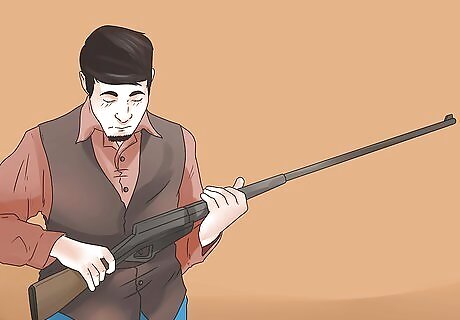
Use a small-calibre, low power gun or air rifle. More powerful guns carry the risk of ricocheting or shooting through the rodent. They may also spread biological material further than smaller guns, causing a bigger mess and a greater health hazard. Low power air guns (12fpe), that are .177 calibre are considered the most appropriate.
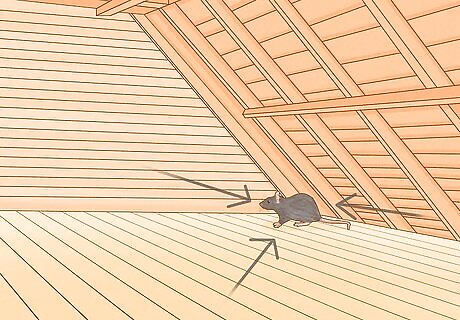
Be sure you have a clear sight of the rodent. A rodent running free is very difficult to catch, but they are easier to corner. If they are cornered, sitting still in a crevice, shooting it with an air-powered BB gun can be an effective and quick way to kill the rodent. This is only envisaged in an emergency situation. Most of the time setting traps in the normal way is preferable to shooting a rodent.

Ensure the shooting environment is safe. If you do decide that shooting the rodent is a good option, ensure that the environment is safe. If the projectile passes through the rodent's head, it may hit people or objects in its path. Make sure the area is free of obstructions before firing.

Shoot the rodent in the head. A shot to the head should kill the rodent instantly. Even a clean shot will be bloody and distressing.
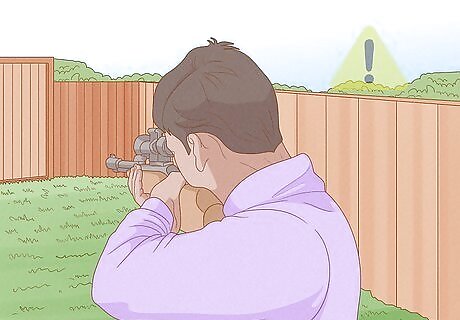
Observe all firearm safety measures. When mishandled, guns can be deadly. This is true for air guns too. An air rifle or pistol should never be aimed at another person. If you are unsure how to safely operate a gun, use another method to kill the rodent You should familiarise yourself with local laws before thinking about shooting a rodent.
Think about your Options before Proceeding

Protect yourself. Rodents, however small, are wild animals. They may bite if threatened. Additionally, they can transmit a variety of diseases. Wear tough gloves and long sleeves if you must touch them, but you should try to avoid this as much as is possible by using a sealable bag to contain the rodent.

Attempt to stress the rodent as little as possible. Agitating the rodent can cause it struggle, flee, or fight. Minimize unnecessary stimulation - handle the rodent gently, don't shine bright lights at it, and don't make loud noises.




















Comments
0 comment